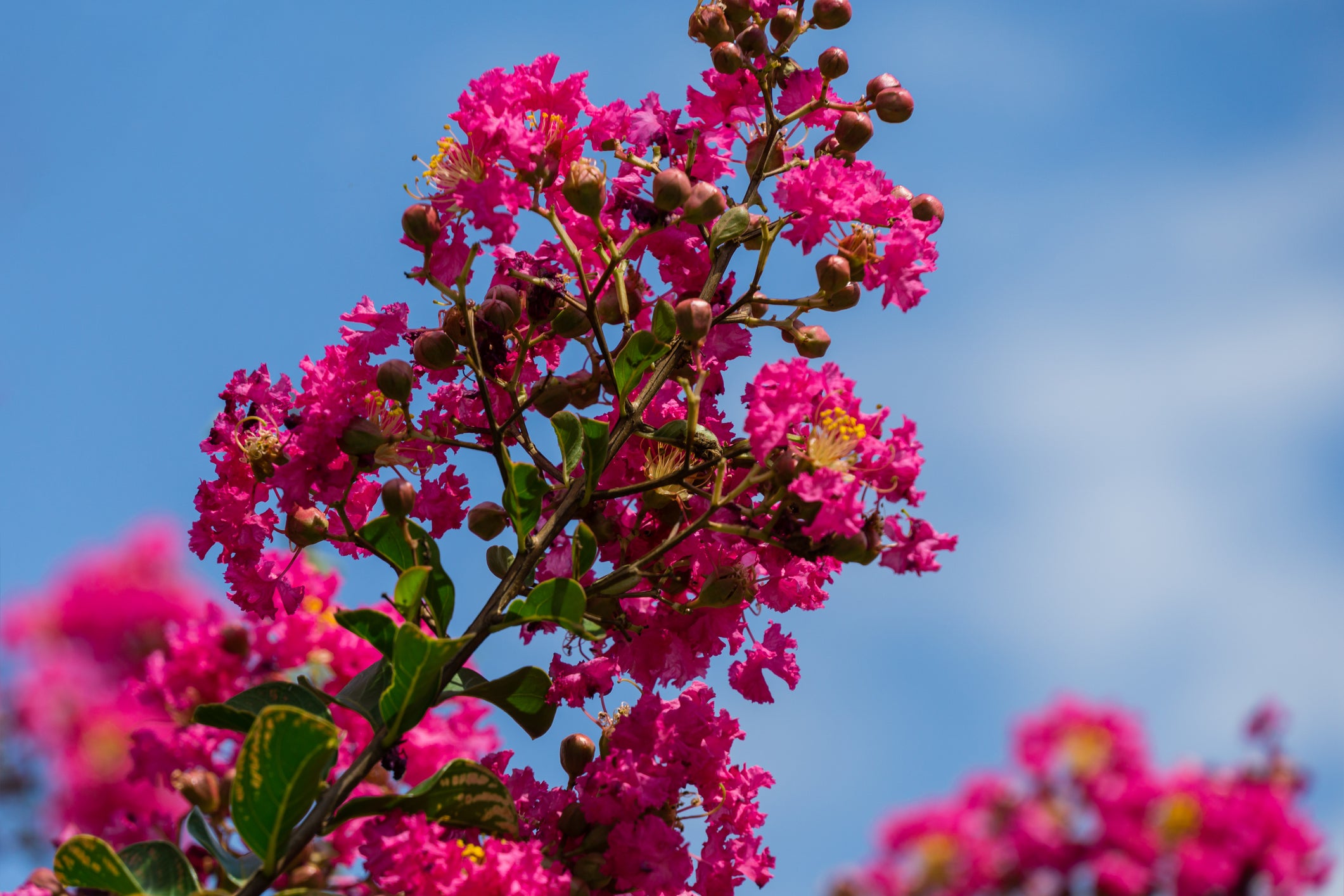If you're seeking a captivating addition to your garden or landscape in the Pacific Northwest, look no further than the stunning crape myrtle tree. Renowned for their vibrant blossoms, attractive bark, and ease of care, crape myrtles bring a touch of Southern charm to the region. Crape myrtles (Lagerstroemia) are an excellent choice for planting in the Pacific Northwest and provide essential tips on growing and caring for these beautiful trees.
Why Choose Crape Myrtle Trees?
Stunning Blooms: Crape myrtles are known for their prolific and long-lasting blooms that cover the tree in vibrant shades of pink, red, purple, and white. Their flowers appear in large clusters, creating a breathtaking display during the summer months.
Colorful Bark: In addition to their remarkable blossoms, crape myrtle trees exhibit attractive bark that peels away to reveal a mosaic of colors, ranging from pale gray to cinnamon-brown. This characteristic adds visual interest and ensures year-round appeal.
Versatility: Crape myrtles come in various sizes, from dwarf varieties suitable for container gardening to taller options ideal for shade or as a focal point in the landscape. This versatility makes them adaptable to different garden settings and allows you to find the perfect fit for your space.
Low Maintenance: Once established, crape myrtle trees are relatively low maintenance, requiring minimal attention. They are well-suited to the Pacific Northwest's climate, as they thrive in full sun and are generally drought-tolerant, making them a resilient and hassle-free choice.

Growing Crape Myrtle Trees in the Pacific Northwest
Choose crape myrtle cultivars that are suitable for the Pacific Northwest's climate. Opt for cold-hardy varieties, such as Lagerstroemia 'Natchez' or 'Sioux,' which can withstand the region's cooler temperatures. Crape myrtles prefer full sun to thrive and produce abundant blooms. Select a location in your garden that receives at least six to eight hours of direct sunlight each day. Ensure the chosen site has well-draining soil to prevent waterlogging. Before planting, prepare the soil by incorporating organic matter like compost or well-rotted manure. This helps improve drainage and fertility, ensuring optimal growth.
Dig a hole that is twice the width of the root ball and just as deep. Gently place the crape myrtle tree in the hole, making sure the top of the root ball is level with the ground. Fill the hole with soil and water thoroughly to settle the tree in place. While crape myrtles are drought-tolerant, regular watering during the first growing season is crucial to help establish their root system. Afterward, they generally require less frequent watering, except during prolonged dry spells. Prune crape myrtle trees during the dormant season, typically in late winter or early spring. Remove any dead, damaged, or crossing branches. Additionally, thin out the canopy to improve air circulation and promote better flowering. Apply a layer of organic mulch around the base of the tree, leaving a few inches of space around the trunk. Mulch helps conserve moisture, suppress weeds, and regulate soil temperature. Use a balanced fertilizer formulated for flowering trees in early spring and follow the package instructions for application rates.
Crape myrtle trees adaptability to various settings, low maintenance requirements, and resistance to drought make them an excellent choice for planting in the region. By following the tips mentioned above, you can successfully grow and care for crape myrtle trees, adding beauty and charm to your outdoor spaces for years to come. Visit our blog for more gardening inspiration and tips.

I love these beautiful trees. I have 2, one is a deep pink & blooms beautifully & a lot. It is shorter & bushy. The other is taller & I think is supposed to be beep red but has Never bloomed, not one flower. They are both about 3 maybe 4 yes old. In about the same area..what am I doing wrong???
Please help. Thank you
I purchased a Crape Myrtle tree in the fall from your store, and I’m very pleased. Now it has beautiful pink blooms. Do I need to cut the blooms off when they dry up so I can have new blooms next year? Thank you.
Leave a comment